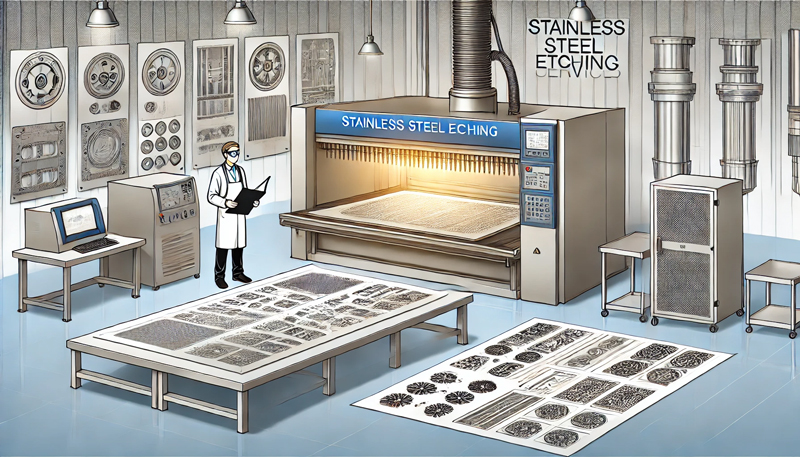
Electrolytic etching of stainless steel is a process used to reveal the microstructure of the metal or create intricate patterns on its surface. This technique relies on the controlled removal of material through an electrochemical reaction in the presence of an electrolyte. Here’s how it works and what you need to know:
Preparation:
Clean the Surface: Ensure the stainless steel surface is free from contaminants, grease, and oxide layers.
Masking (Optional): Apply a resist (such as vinyl tape or wax) to protect areas that should not be etched.
Electrolyte Selection:
A mix of phosphoric acid and sulfuric acid (for general etching purposes).
Solutions of ferric chloride for a more aggressive etch.
Pre-made Stainless steel etching solutions are also available commercially.
Common electrolytes include:
Dilute the electrolyte appropriately to control the etching rate and avoid excessive heat or pitting.
Setting Up the Circuit:
Connect the stainless steel part to the positive terminal (anode) of a DC power source.
Use an inert material, such as graphite or platinum, as the cathode, connected to the negative terminal.
Ensure the part and the cathode are submerged in the electrolyte without touching.
Applying Voltage:
Use a DC power supply with a voltage range between 3–12 volts, depending on the desired etch depth and speed.
Higher voltages can cause rapid etching but may lead to uneven results or localized overheating.
Monitoring the Etch:
Watch for bubbling (oxygen evolution at the anode) as the material is etched.
Periodically check the workpiece to ensure the desired pattern or depth is achieved.
Post-Etching Treatment:
Rinse the part thoroughly with water to neutralize and remove electrolyte residues.
Clean using a mild alkaline solution or ultrasonic bath if necessary.
Polish or passivate the etched area to enhance corrosion resistance.
Protective Gear: Wear gloves, goggles, and a face shield to avoid exposure to acids or sparks.
Ventilation: Work in a well-ventilated area or under a fume hood to avoid inhaling harmful fumes.
Neutralization: Have a neutralizing agent (e.g., baking soda solution) ready in case of spills.
Decorative: Creating logos, patterns, or artwork on stainless steel.
Industrial: Revealing the microstructure for metallurgical analysis.
Marking: Permanent identification marks for tools or equipment.
Contact: andy_Lai
Phone: 18938693450
E-mail: yw9@zldsmt.com
Add: Building A3, Huafa Industrial Park, Fuyong Town, Fuyuan Road, Fuyong Town, Baoan District, Shenzhen,China